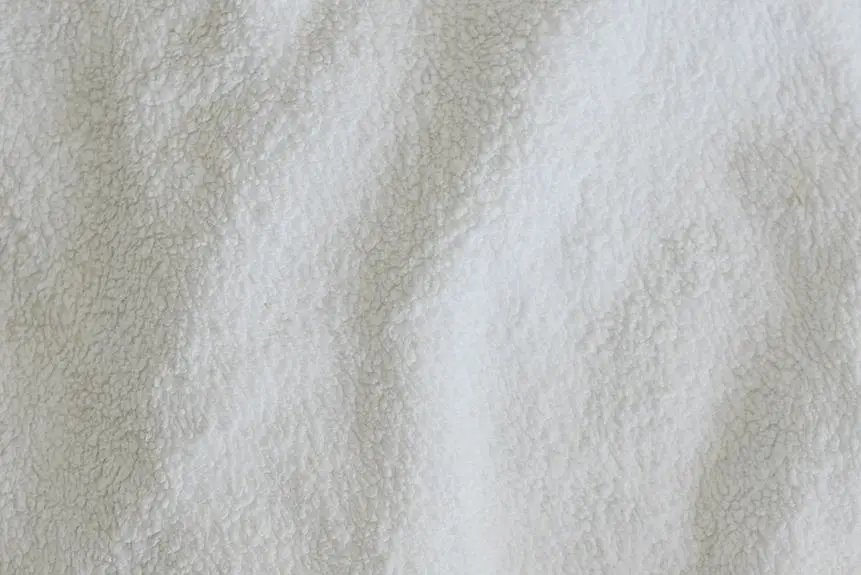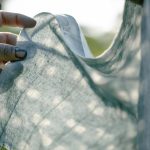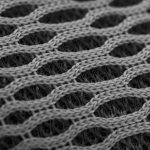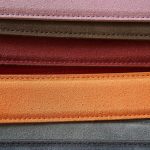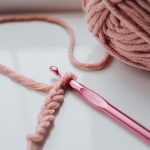Are you ready to unlock the secrets of serging knits?
Mastering the art of sewing knits with a serger opens up a world of possibilities in garment making.
From understanding knit fabrics to troubleshooting serger issues, this guide will equip you with the knowledge and skills to confidently work with knits on your serger.
With the right techniques, you can achieve professional-looking seams, prevent puckering, and ensure your knit garments have the perfect finish.
Get ready to elevate your sewing game as we delve into the nuances of serging knits.
Key Takeaways
- It's important to consider the fabric's stretch when selecting a suitable thread and stitch type for your serger.
- Fabrics with high stretch, like spandex or Lycra, require a stretch thread and a serger stitch designed for knits.
- Needle size depends on the weight and thickness of the knit fabric.
- Adjusting tension is crucial for achieving professional-looking results when sewing knits with a serger.
Understanding Knit Fabrics
When sewing knits with a serger, you need to understand the different types of knit fabrics. Understanding knit stretch and fabric properties is crucial for achieving professional results.
Knit fabrics come in various stretch percentages, such as 2-way stretch (stretching in one direction) and 4-way stretch (stretching in both directions). It's essential to consider the fabric's stretch when selecting a suitable thread and stitch type for your serger.
For fabrics with high stretch, like spandex or Lycra, using a stretch thread and a serger stitch designed for knits, such as a lightning or a narrow overlock stitch, is recommended. These stitches provide the necessary elasticity, preventing popped seams when the fabric stretches.
On the other hand, for stable knits like ponte or double knits, a regular polyester thread and a basic overlock stitch may suffice.
Choosing the Right Serger Needles
When it comes to choosing the right serger needles for sewing knits, there are a few key points to consider.
You'll want to pay attention to the needle size suitable for knits, the specific needle type recommended for knit fabrics, and troubleshooting tips for serger needles when working with knits.
Understanding these points will help you achieve professional-looking results when sewing knits with a serger.
Needle Size for Knits
To sew knits with a serger, you should choose the right serger needles by selecting the appropriate needle size for the fabric. When working with knits, it's crucial to use needles specifically designed for stretchy fabrics. The most suitable needle size for knits is a ballpoint or stretch needle.
Ballpoint needles have a rounded tip that slides between the yarns rather than piercing them, which helps prevent snags and runs in the fabric. The needle size depends on the weight and thickness of the knit fabric. Generally, for lightweight knits, a smaller needle size like 75/11 is suitable, while heavier knits may require a larger size such as 90/14.
It's also important to adjust the serger's tension settings to accommodate the stretchiness of the fabric, ensuring smooth and professional-looking seams.
Needle Type for Knits
You should select ballpoint or stretch needles specifically designed for knits when using a serger to sew knits. These needles have a rounded tip that slides between the fabric's fibers instead of piercing them, preventing snags and runs in the knit fabric.
When sewing knits with a serger, consider the following:
- Needle care: Ensure your needles are sharp and free from any burrs or nicks that could damage the fabric. Replace your needles regularly, especially if you notice skipped stitches or snags in the fabric.
- Fabric handling: When using a serger on knits, gently stretch the fabric as it feeds through the machine to prevent it from becoming stretched or distorted during the sewing process.
- Proper needle type: Choose the appropriate needle type, such as ballpoint or stretch needles, to ensure clean and smooth stitches on knit fabrics.
Serger Needle Troubleshooting
To achieve optimal results when sewing knits with a serger, ensure that you're using the correct serger needles for the fabric type and weight. Needle breakage can occur if the wrong needle type or size is used.
When sewing knits, consider using ballpoint or stretch needles designed specifically for knit fabrics. These needles have a rounded tip that slides between the fabric threads, reducing the risk of needle breakage.
Additionally, adjusting the thread tension can help prevent needle breakage. Incorrect thread tension can put unnecessary strain on the needles, leading to breakage. Be sure to check and adjust the thread tension according to the fabric type and thickness.
Adjusting Tension for Knit Fabrics
When sewing knits with a serger, adjusting tension is crucial for achieving professional-looking results. You'll need to consider tension settings for knits, serger stitch length, and the differential feed adjustment to ensure your fabric is sewn smoothly and securely.
These adjustments will help prevent stretching, puckering, or distortion of the fabric, resulting in a clean and polished finish.
Tension Settings for Knits
Adjusting tension for knit fabrics involves carefully testing and tweaking the settings on your serger to achieve the ideal stitch quality. When working with knits on a serger, the tension settings play a crucial role in ensuring a professional finish. Here are three key factors to consider:
- Proper Thread Tension: Adjust the tension dials on your serger to accommodate the stretchiness of knit fabrics. Experiment with different tension settings to achieve the ideal balance between the upper and lower loopers.
- Stitch Length and Width: Fine-tune the stitch length and width to suit the specific characteristics of the knit fabric. A slightly longer stitch length and narrower width can prevent the fabric from puckering or stretching out.
- Test on Scrap Fabric: Always test your tension settings on a scrap piece of the same knit fabric before starting your actual project. This allows you to make any necessary adjustments without compromising the final result.
Serger Stitch Length
You should start by selecting the appropriate stitch length on your serger when sewing knit fabrics, as it directly impacts the tension and stretch of the stitches. Adjusting stitch length is crucial in achieving the perfect finish for your knit projects. The table below outlines the recommended stitch length for different types of knit fabrics to help you achieve professional results.
| Knit Fabric | Recommended Stitch Length |
|---|---|
| Lightweight | 2.5-3.0 mm |
| Medium-weight | 3.0-3.5 mm |
| Heavyweight | 3.5-4.0 mm |
| Stretchy knits | 2.5-3.0 mm |
Differential Feed Adjustment
How effectively can you fine-tune the differential feed on your serger to adjust the tension for sewing knit fabrics? When working with knit fabrics, it's crucial to understand the characteristics of the fabric and how to adjust your serger's tension accordingly.
Here are three essential differential feed techniques for sewing knit fabrics:
- Understanding Knit Fabric Characteristics: Before adjusting the tension on your serger, it's important to understand the stretch and recovery of the specific knit fabric you're working with. Different knits may require varying levels of differential feed adjustment to achieve the desired stitch quality.
- Balancing Differential Feed: Experiment with the settings on your serger to find the optimal balance for the differential feed. This may involve adjusting both the front and back feed dogs to ensure an even feed of the knit fabric.
- Testing and Fine-Tuning: Once you've made adjustments, conduct test stitches on scrap fabric to evaluate the stitch quality. Fine-tune the settings as needed to achieve a professional finish on your knit projects.
Differential Feed for Knits
When sewing knits with a serger, it's important to understand how differential feed can impact the outcome of your seams. Knit fabrics have unique characteristics such as stretch and recovery, which can make them challenging to sew with a regular sewing machine. However, a serger with differential feed can help you achieve professional-looking seams on knit fabrics. The differential feed mechanism on a serger allows the front feed dogs to move at a different speed than the rear feed dogs, which is beneficial when working with stretchy fabrics. By adjusting the feed ratio, you can prevent issues such as puckering, stretching, or waviness in your seams.
| Differential Feed Setting | Fabric Behavior |
|---|---|
| Higher Front Feed Ratio | Prevents stretching and distortion |
| Lower Front Feed Ratio | Reduces puckering and gathers |
Seam Finishes for Knit Garments
Achieving professional-looking seam finishes on knit garments requires understanding the appropriate techniques for serging. When working with knits, it's crucial to consider the fabric's stretchability and choose the right seam construction to ensure comfortable and durable finished garments.
Here are three essential seam finishes to consider for knit garments:
- Overlock Seam: This is a basic seam finish for knits, created using a serger. It trims the seam allowance while enclosing the raw edges, preventing fraying and ensuring a clean, professional look. The overlock seam allows the fabric to stretch without causing the seam to pop, making it ideal for knit garments.
- Flatlock Seam: This seam finish is designed to minimize bulk and is commonly used in sportswear and activewear. It provides a smooth, flat finish on both sides of the fabric, making it comfortable against the skin. The flatlock seam is ideal for joining seams in areas where reduced bulk and enhanced stretch are desired.
- Coverstitch Seam: When sewing knit garments, using a coverstitch machine can create a professional, ready-to-wear finish. The coverstitch creates a durable seam that allows for fabric stretch while preventing stitches from breaking. It's commonly used for hems, necklines, and decorative stitching on knit garments.
Preventing Puckering and Stretching
To prevent puckering and stretching when sewing knits with a serger, adjust the differential feed and tension settings based on the fabric's stretchability. Knit fabrics come in various stretch percentages, and it's essential to handle them accordingly to ensure professional-looking results. Here are some fabric handling techniques to prevent puckering and stretching:
| Differential Feed | Tension Settings |
|---|---|
| Lower the feed ratio for fabrics with less stretch to prevent stretching. | Increase the tension for lightweight knits to prevent puckering. |
| Increase the feed ratio for highly stretchable fabrics to prevent puckering. | Decrease the tension for heavyweight knits to prevent excessive stretching. |
| Check the fabric's stretch and adjust the settings accordingly. | Ensure the thread tension is balanced for both needle threads and loopers. |
Tips for Handling Knit Seams
Adjusting the differential feed and tension settings is crucial for handling knit seams when sewing with a serger. When working with knit fabrics, it's important to ensure that your serger is set up correctly to avoid issues such as puckering and stretching in your seams. Here are some essential tips for handling knit seams:
- Handling Stretch: Set the differential feed to 1.0 to prevent stretching and puckering in knit fabrics. This will help the fabric feed evenly through the machine, preventing any unwanted distortion in the seams.
- Seam Finishes: Use a suitable seam finish for knit fabrics, such as a three-thread overlock or a flatlock stitch. These finishes will provide the necessary stretch and durability for knit garments, ensuring that the seams can withstand the natural movement of the fabric.
- Troubleshooting Issues: If you encounter puckering or stretching in your seams, re-evaluate your differential feed and tension settings. Additionally, consider using a ballpoint needle designed specifically for knit fabrics to prevent skipped stitches and fabric damage.
Troubleshooting Knit Serger Issues
Troubleshoot knit serger issues by examining the tension settings and differential feed for optimal performance. When working with knits on a serger, troubleshooting tension and stitch length adjustments can greatly improve the quality of your finished seams. Here's a helpful table to guide you through the common issues and their potential solutions:
| Knit Serger Issues | Possible Solutions |
|---|---|
| Uneven or Loopy Stitches | Check and adjust the tension settings for each thread. Ensure that the threads are properly seated in the tension disks. |
| Puckered Seams | Increase the stitch length slightly to reduce the amount of fabric being fed through the serger. Check the differential feed to ensure it's not gathering the fabric too much. |
| Skipped Stitches | Make sure the needles are inserted correctly and are not blunt. Check the needle thread tension and adjust if needed. |
Frequently Asked Questions
Can a Regular Sewing Machine Be Used to Sew Knits Instead of a Serger?
Yes, a regular sewing machine can be used to sew knits instead of a serger. You can use a stretch or zigzag stitch to accommodate the fabric's stretch. Sewing machine alternatives for knits are effective.
What Are the Benefits of Using a Serger for Sewing Knit Fabrics?
When sewing knits, a serger offers benefits like stretch stitches for flexibility, professional finish for a polished look, and efficient fabric handling. It's a game-changer for achieving durable and high-quality knit garments.
Can a Serger Be Used to Sew Different Types of Knit Fabrics, Such as Jersey, Interlock, or Rib Knit?
Sewing knit fabrics with a serger is ideal for creating stretchy seams that won't pop when stretched. Adjust your serger settings for different types of knits, like jersey, interlock, or rib knit, to achieve professional-looking and durable results.
How Do You Prevent Skipped Stitches When Sewing Knits With a Serger?
To prevent skipped stitches when sewing knits with a serger, adjust the tension settings. Properly set tension ensures smooth stitching on stretchy fabrics. Troubleshoot issues by checking thread quality and machine maintenance for optimal results.
Are There Any Tips for Hemming Knit Garments With a Serger?
When hemming knit garments with a serger, ensure your machine is set up for knit fabrics. Use a differential feed to prevent stretching, and try a blind hem or coverstitch for professional-looking finishes. Troubleshooting skipped stitches? Check needle type and tension.
- Where to Buy Sherpa Suede Fabric - July 12, 2025
- How to Draw or Illustrate the Texture of Suede Fabric - July 12, 2025
- What Is Baseball Suede Leather Fabric? - July 12, 2025

